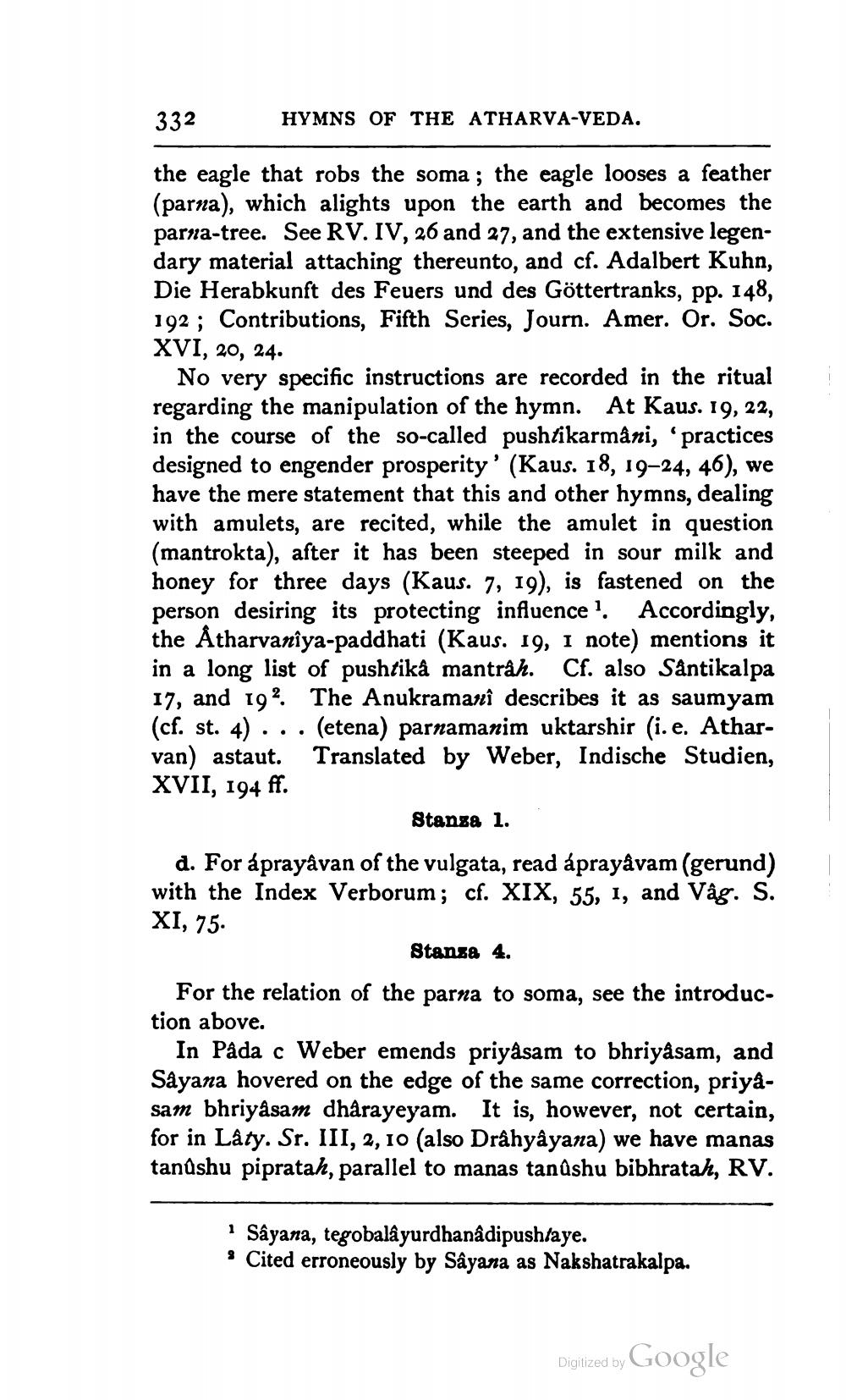________________
332
HYMNS OF THE ATHARVA-VEDA.
the eagle that robs the soma; the eagle looses a feather (parna), which alights upon the earth and becomes the parna-tree. See RV. IV, 26 and 27, and the extensive legendary material attaching thereunto, and cf. Adalbert Kuhn, Die Herabkunft des Feuers und des Göttertranks, pp. 148, 192 ; Contributions, Fifth Series, Journ. Amer. Or. Soc. XVI, 20, 24.
No very specific instructions are recorded in the ritual regarding the manipulation of the hymn. At Kaus. 19, 22, in the course of the so-called pushtikarmâni, 'practices designed to engender prosperity' (Kaus. 18, 19–24, 46), we have the mere statement that this and other hymns, dealing with amulets, are recited, while the amulet in question (mantrokta), after it has been steeped in sour milk and honey for three days (Kaus. 7, 19), is fastened on the person desiring its protecting influence!. Accordingly, the Åtharvanîya-paddhati (Kaus. 19, 1 note) mentions it in a long list of pushtika mantråh. Cf. also Såntikalpa 17, and 192 The Anukramanî describes it as saumyam (cf. st. 4) ... (etena) parnamanim uktarshir (i.e. Atharvan) astaut. Translated by Weber, Indische Studien, XVII, 194 ff.
Stansa 1. d. For áprayavan of the vulgata, read áprayâvam (gerund) with the Index Verborum; cf. XIX, 55, 1, and Våg. S. XI, 75.
Stanza 4. For the relation of the parna to soma, see the introduction above.
In Påda c Weber emends priyasam to bhriyasam, and Sâyana hovered on the edge of the same correction, priyasam bhriyasam dharayeyam. It is, however, not certain, for in Laty. Sr. III, 2, 10 (also Drâhyâyana) we have manas tanushu pipratah, parallel to manas tanúshu bibhratah, RV.
Sâyana, tegobalâ yurdhanâdipushtaye. : Cited erroneously by Sâyana as Nakshatrakalpa.
Digitized by Google




